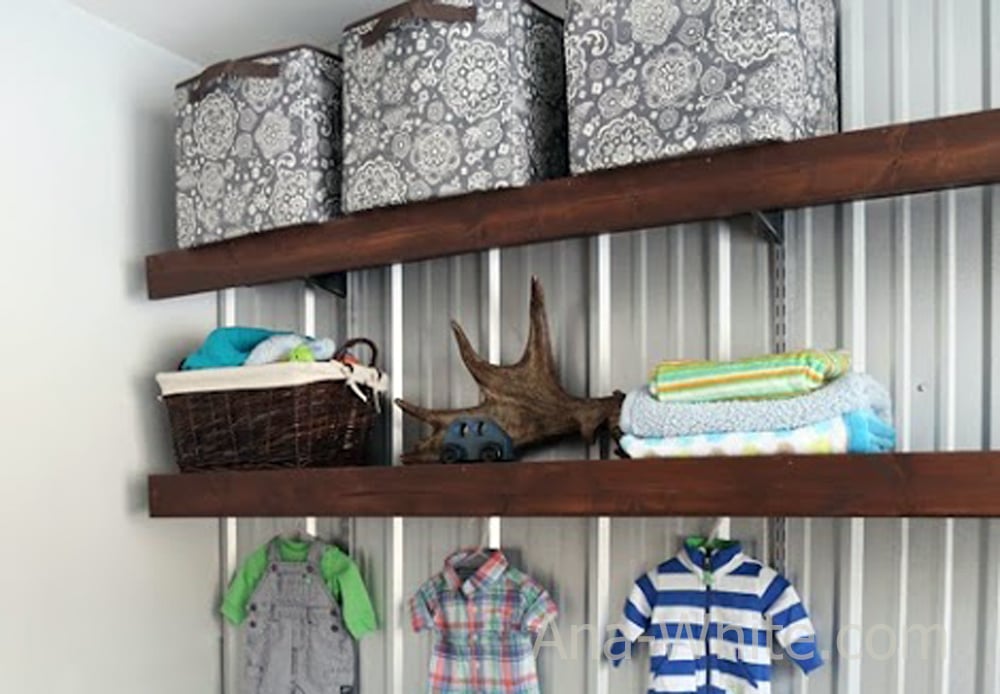
Using inexpensive wire shelving tracks and brackets and pinewood boards, create beautiful and strong wood shelving the easy way!
The original shelf cover tutorial by Ana-White.com.
Pin for Later!

Preparation
- Vertical Shelf Tracks (sometimes called standards, I used one track per every other stud)
- Shelf brackets (11"-12" long, for under the shelves, one per intersection of shelf and vertical track)
- Optional horizontal hanging track to assist with hanging the vertical shelf tracks
- Per Each Shelf, one 1x12 and one 1x4 in the desired length
- 1-1/4" brad nails or pocket hole screws
- Short wood screws for securing the shelf brackets to the shelves
Instructions
Step 1
Step 2
Hanging Tracks on the Wall
The vertical tracks, sometimes called "standards", need to be secured to the wall. For the wood shelving, standards can be hung every other stud. For heavier loads, install tracks every stud appart. Tracks can be hung on the wall in two different ways.
Method 1: Direct to Studs (less visible and less parts, but must be hung on studs in wall)
- Locate the studs in the wall and hang the tracks directly to the studs in the wall. I spaced mine every other stud, with two screws per 48" vertical track (one screw near top and one near bottom)
- The tops of the standard tracks (hung vertically) should all be level, at the same height, I recommend the height be the same as your top shelf desired height
Method 2: Hang Track (more beginner friendly and more flexible)
- Use a Hang track that is installed across the top
- Standards are then hung from the hang track
- This is an easier method, but requires purchasing of the hang track and the hang track is visible
Here's a video of installing with the hang track:
Step 3
Step 4
Wood Shelf Covers Construction
The wood shelf covers are made of 1x12 pine boards, cut to the length desired, and a 1x4 board on the front.
Simply nail and glue the 1x4 to the front of the 1x12 board with 1-1/4" brad nails.
You can also use hidden 3/4" pocket holes with 1-1/4" pocket hole screws for a more polished look.
Paint or stain the shelves as desired.
Step 5
It is always recommended to apply a test coat on a hidden area or scrap piece to ensure color evenness and adhesion. Use primer or wood conditioner as needed.


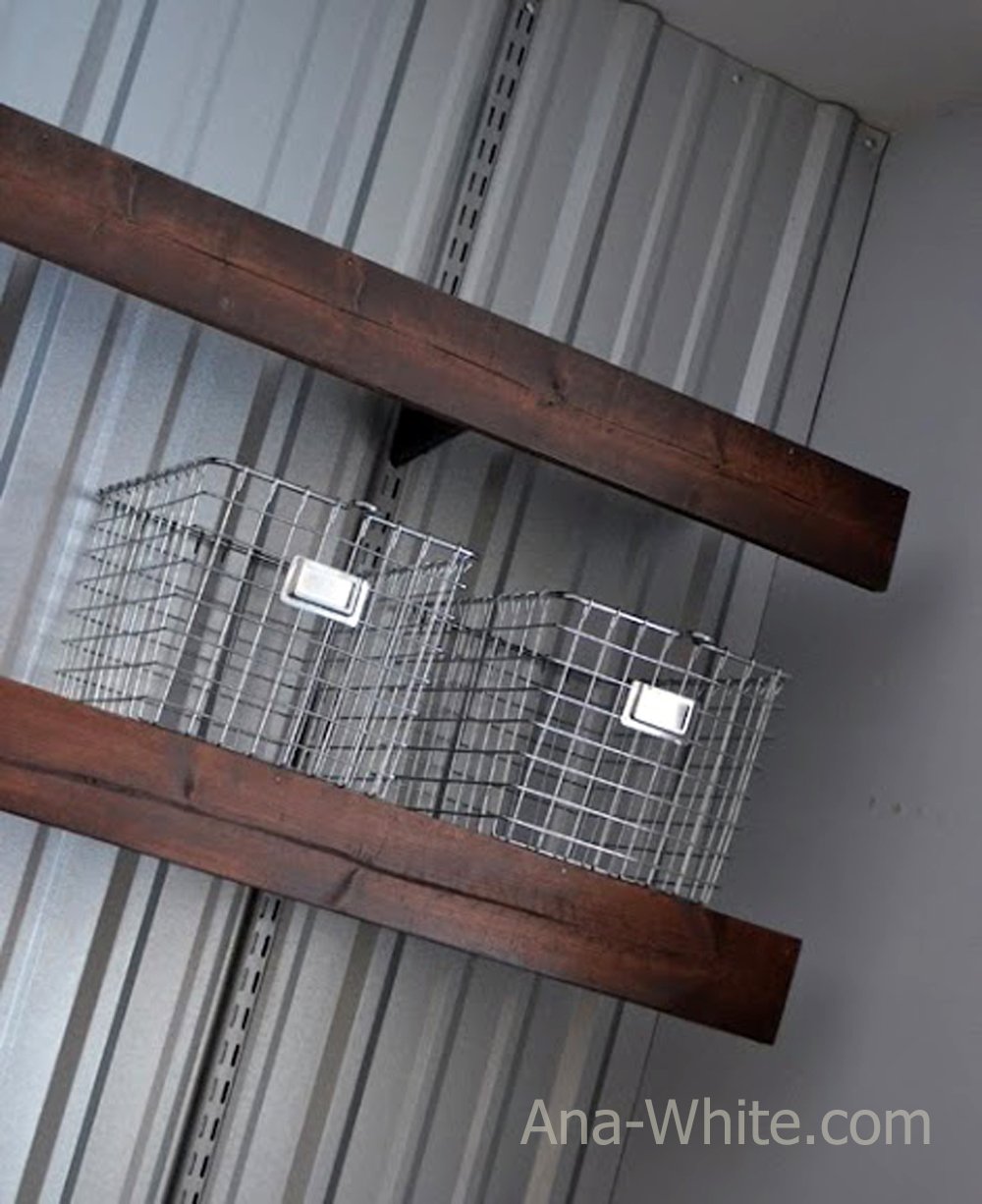
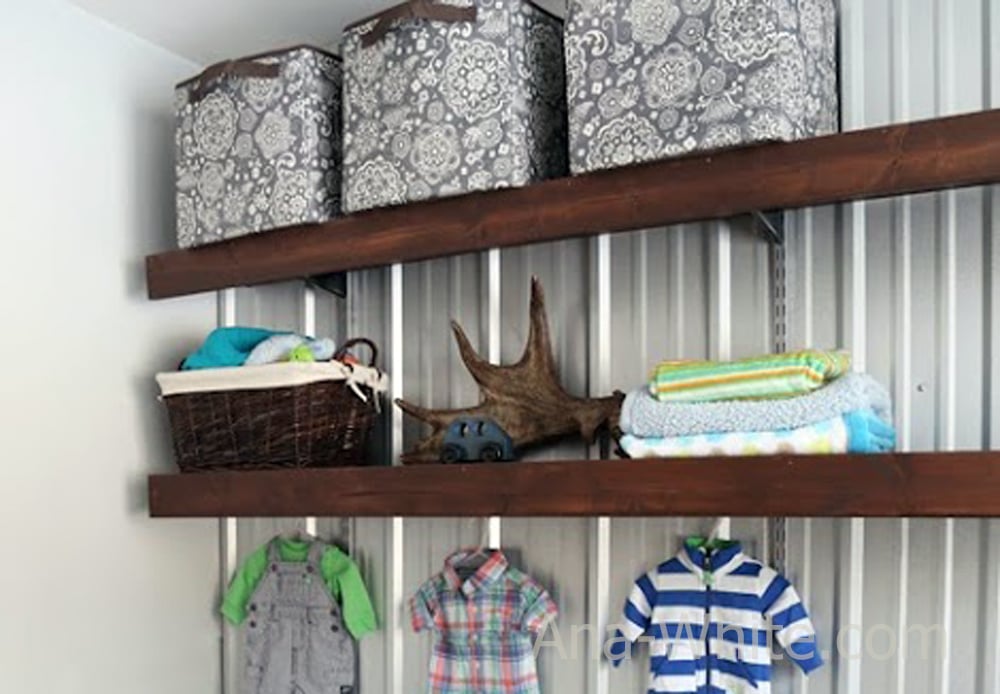
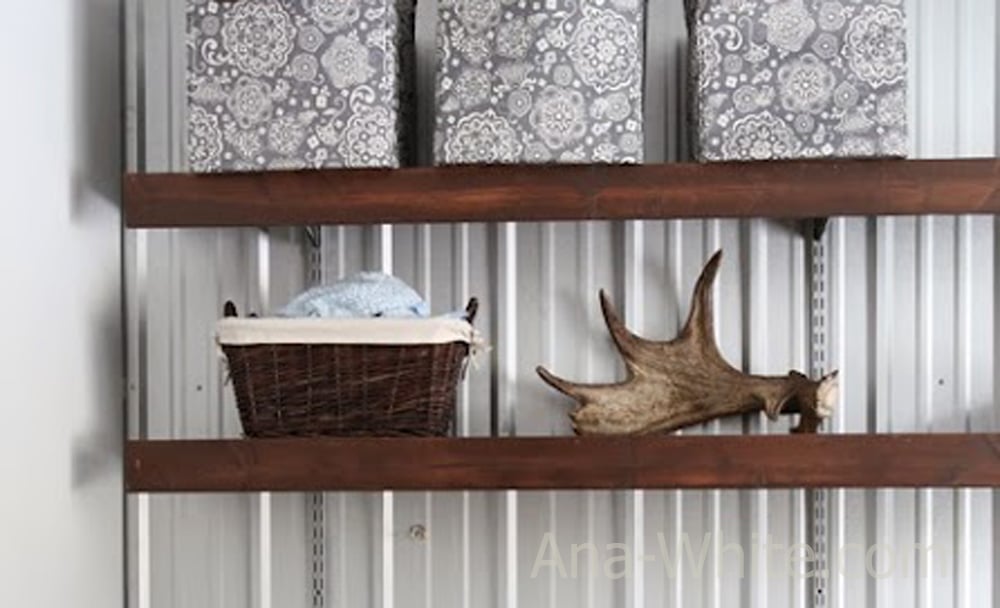







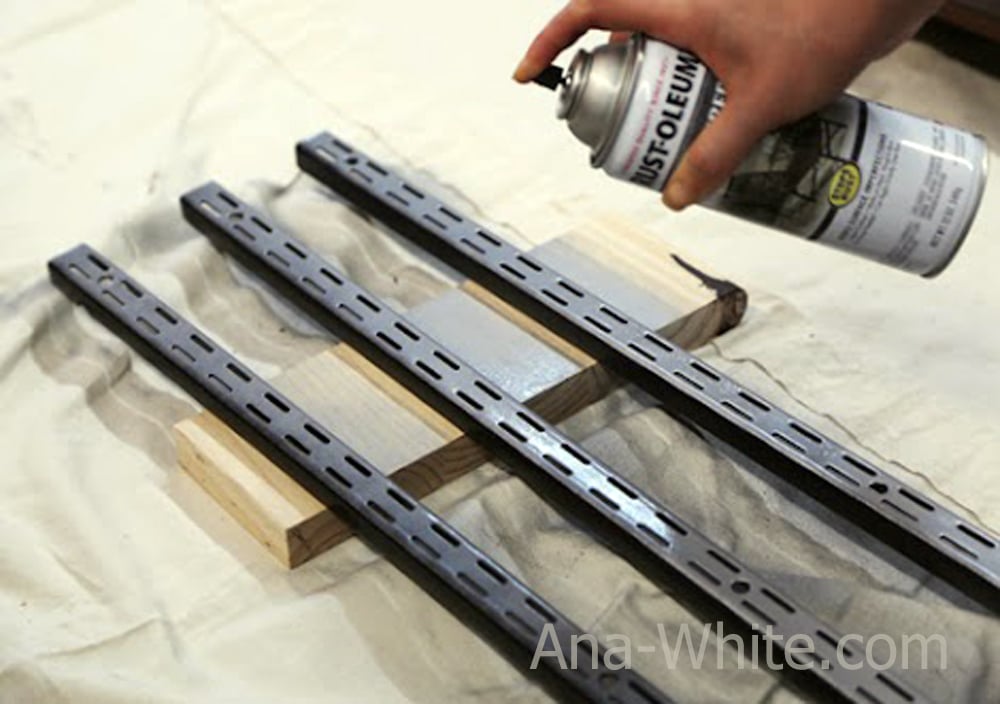
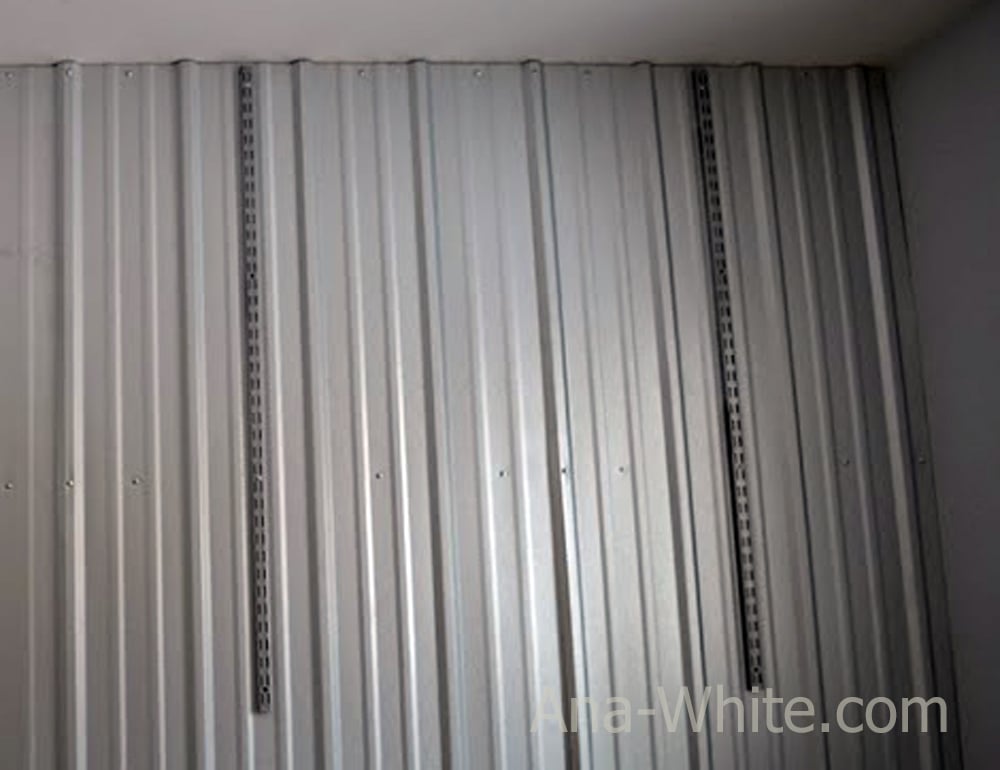


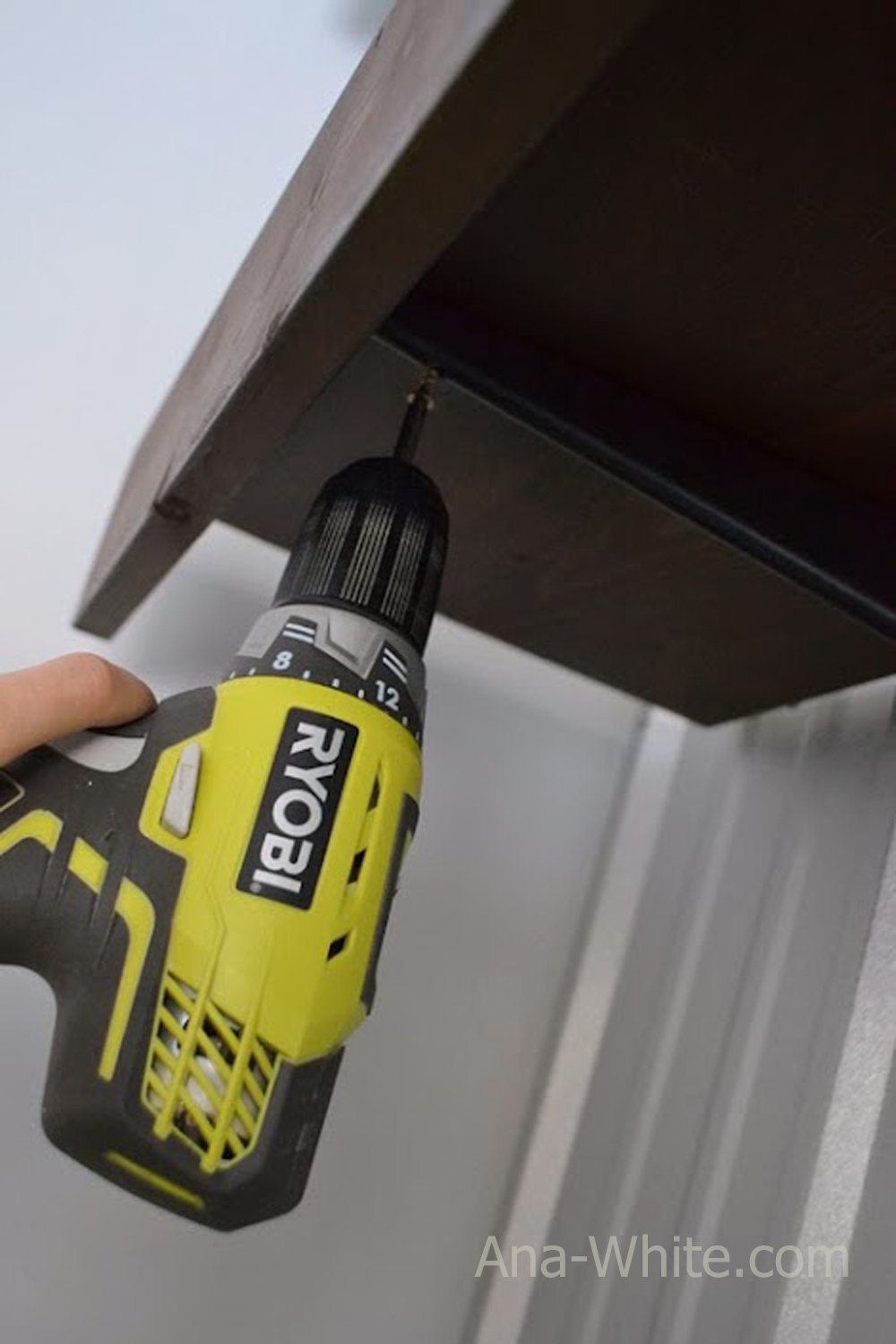
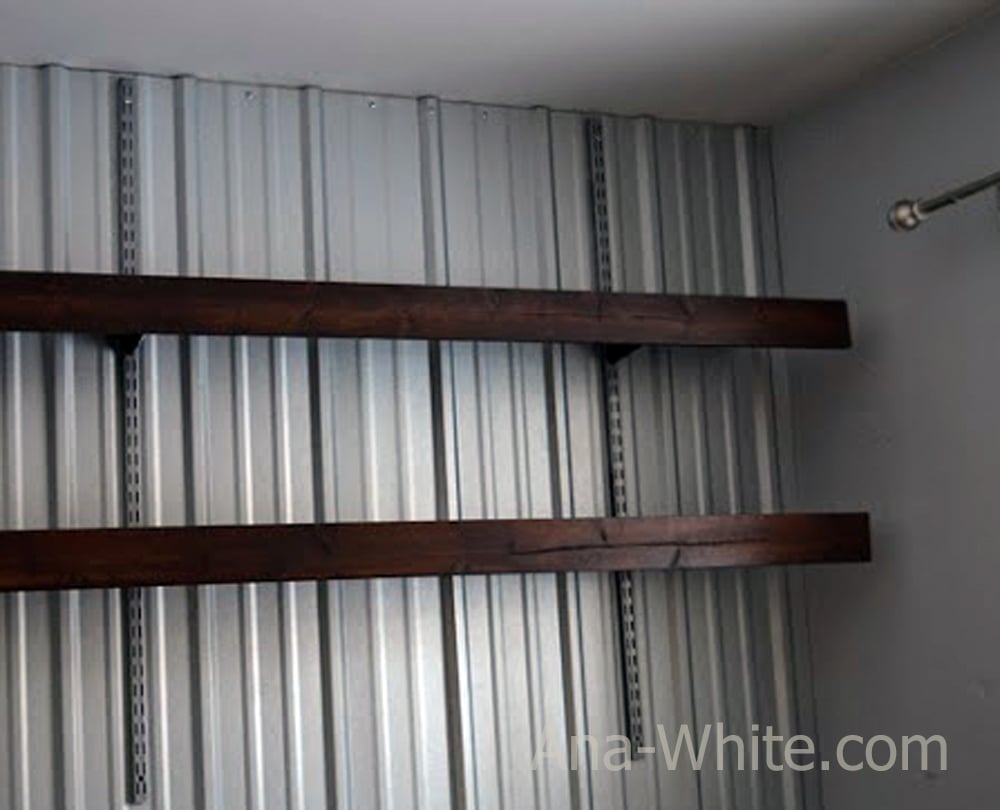
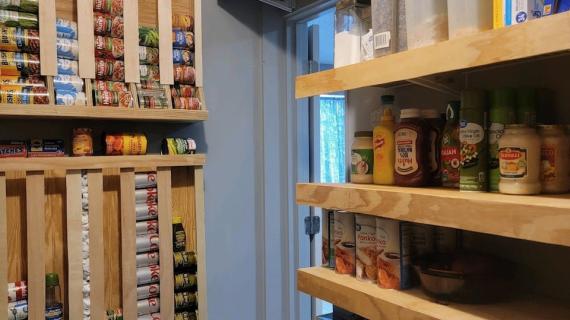
Comments
dmcarwin
Mon, 02/24/2014 - 22:18
I "Luv" it!
They look beautiful Ana!! Especially with your changing table! And I loved seeing your sweet baby boy clothes hanging up!
birdsandsoap
Tue, 02/25/2014 - 21:46
Love those little suits
Love those little suits hanging up there!
Val Manchuk
Tue, 02/25/2014 - 22:05
Beautiful!
Ana, these look so good! I love the dark stain against the metal background. Cute little baby clothes, too!
Val @ artsybuildinglady.blogspot.ca